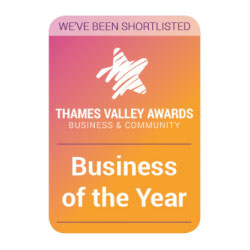“The key to success is not through achievement but through enthusiasm.” – Malcolm Forbes
For decades, we have embraced the ‘face-to-face interview’, typically in person and sometimes by phone. Even before the COVID-19 pandemic closed many of us in our homes, video interviewing has for so long been a very popular hiring tool among recruiters. According to Software Advice 60% of hiring managers and recruiters started using video interviews at one of the stages in their hiring process.
In the land of job interviews, we have come to rely on and expect the two-way or face-to-face interview where the employer asks the questions and the job seeker responds, hopefully turning the process into a conversation and connection. Now we have something new on the horizon which is still rare and will take time to adapt to – it is the one-way video interview.
One-way video chats are an increasing method of doing the first round of interviews, although ones conducted on the phone are still also widely used. The purposes of the one-way video interview and the phone interview are typically the same, i.e., confirm that the candidate meets the basic requirements for the job. This new style shakes up everything we hold dear about what an interview is supposed to entail.
Usually, this interview happens at the beginning of the hiring process, often as a replacement or supplement to the phone interview which has typically served as the first step in screening job candidates. The concept is simple – the employer can request video footage from a job seeker, and the job seeker answers pre-scripted interview questions usually by a specific date that is the deadline set by the hiring company. Then, members of the employer’s staff can watch, and re-watch, the candidate’s answers to the questions at their convenience. Even though it sounds more intimidating than the usual video interviews, both are still kind of same and require similar three steps to be successful.
The three steps to successfully acing a video interview, including the one-way video interview, are Practice, Prepare and be Professional – the 3 P’s.
1. Practice
No matter how many blogs or articles you read or whom you ask for suggestions, we are still going to say it, not once, but a thousand times that practice is the only key to your success. You must know your script well enough to be natural. When you answer the questions, you need to sound like it is second nature to share this information. You will not project that unless you memorise it, practice it aloud, and grow into it, just like an actor does with a script.
This is one of the vital steps for you if you are camera shy. Try practising being on camera as much as you can and keep going through those recordings. This will help you to work out the wrinkles before your interview. Take help from your elders or family members in case you require assistance in maintaining the relaxed yet confident composure.
2. Prepare
One of the perks of a video interview is that there might be chances of you getting a hold of the questions beforehand. If you receive the questions in advance, you have received a fabulous opportunity to be well-prepared. It is like being handed the keys to the kingdom. Script out your answers in advance, remembering to tell clear and concise examples of your accomplishments.
If you do not receive the questions in advance, which is, unfortunately, more likely, be prepared to answer the standard job interview questions. Focus on the challenges you faced in the past, the actions you took, and the results you attained. Then, be sure to focus on how you align with the job’s requirements as well as the employer’s goals and mission.
3. Be professional
Although you are not going into an office to meet with the interviewer face to face, you still need to dress appropriately for a video interview. Employers still expect a traditional interview outfit. Be prepared to look as good as you can on camera. Be sure not to wear plaid or stripes as they can be distracting on camera.
Lighting is also important. Generally, your best strategy is to sit opposite an open window. If you are doing the interview at night, which may very well be the case if you have a full-time job, you can brighten up dim space by adding floor or desk lamps.
So in short, prepare beforehand, for any other interview, practice as much as possible and look the part.
ABL Recruitment team









